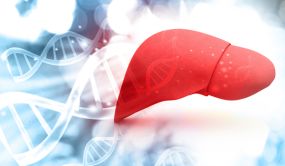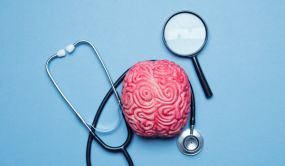Is Your Chest Pain Not a Heart Attack? Understanding Costochondritis and Other Non-Cardiac Pain
Many people immediately worry about a "heart attack" when they feel chest pain, but not all chest discomfort signals a heart problem. In fact, a wide range of conditions—digestive issues, muscle inflammation, lung disorders, or anxiety—can all cause chest pain. Understanding these chest pain causes is critical to responding appropriately when they arise.
Recognizing that chest pain may originate from non-cardiac sources—i.e., chest pain not heart attack—can help reduce panic and ensure you get the right kind of medical evaluation. Conditions such as costochondritis, a common inflammation of rib cartilage, are often misunderstood, but knowing them helps you better communicate your symptoms to a healthcare provider.
Common Chest Pain Causes That Aren't Heart Attacks
While chest pain often raises concern for heart issues, many cases stem from non-cardiac causes. Understanding these common culprits helps identify the source and seek appropriate care.
1. Gastroesophageal Reflux Disease (GERD)
One of the most common non-cardiac sources of chest pain is acid reflux. In GERD (gastroesophageal reflux disease), stomach acid flows back into the esophagus, irritates its lining, and causes a burning sensation behind the breastbone. This type of pain can closely mimic angina—yet it's not related to the heart.
2. Musculoskeletal Causes
Musculoskeletal problems account for a large share of non-cardiac chest pain causes. Costochondritis, which is inflammation of the cartilage linking ribs to the sternum, is especially common. According to MedlinePlus, it causes tenderness when pressing on the chest wall, and deep breaths or movement worsen the pain. Strains in chest muscles, rib injuries, and other cartilage issues can also trigger pain similar to a heart attack. In many cases, these conditions stem from physical overuse, trauma, or inflammation. Musculoskeletal chest pain is a frequent diagnosis when a cardiac cause is ruled out.
3. Pulmonary Conditions
Chest pain may also arise from lung-related conditions. Infections like pneumonia, inflammation of the lung lining (pleurisy), or more serious problems such as a pulmonary embolism (a blood clot in the lung) can all present with chest discomfort. These are important considerations when heart-related issues have been excluded. Pleurisy causes sharp chest pain that worsens with breathing.
Recognizing Costochondritis and Other Musculoskeletal Chest Pain
Costochondritis is a very common but often misunderstood source of chest pain. It results from inflammation of the costochondral joints—the cartilage connecting your ribs to your breastbone. The pain can come on suddenly or gradually and may travel around the chest, especially when breathing deeply, coughing, or moving the upper body. One key clue that chest pain is due to costochondritis (rather than heart disease) is that pressing on the costochondral joints often produces tenderness. This is not typical of cardiac-related pain.
Treatment is generally straightforward and conservative: rest, avoiding movements that trigger pain, applying heat or cold, and using over-the-counter anti‑inflammatories like ibuprofen. According to MedlinePlus, symptoms usually improve over several days to weeks, but recovery can take longer in some cases. If pain persists or worsens, medical evaluation is essential to rule out more serious issues.
Psychological and Other Non-Cardiac Factors Causing Chest Pain
Mental health can also play a big role in chest discomfort. Anxiety and panic attacks often mimic heart attacks, producing sharp or tight chest pain, rapid heartbeat, breathing changes, and sweating. According to the Cleveland Clinic, when anxiety triggers a fight‑or‑flight response, stress hormones cause chest muscle tension, leading to pain. In addition to emotional triggers, other non-cardiac causes may include nerve pain (for example, from shingles), esophageal spasms, or other digestive disorders. These issues can produce lingering or stabbing sensations that are often mistaken for serious cardiac events.
Conclusion
Chest pain is alarming but not always a sign of a heart attack. Understanding common chest pain causes such as GERD, costochondritis, or anxiety gives you perspective—and greater control. Recognizing chest pain, not heart attack, doesn't mean ignoring symptoms: rather, it means seeking the correct evaluation to identify the true source. If pain is sharp, reproducible with movement, or linked to digestive or emotional triggers, mention these to your healthcare provider. Clarifying the cause lets you get the right treatment, easing discomfort and enhancing peace of mind.
Frequently Asked Questions
1. When should I worry about chest pain and seek emergency care?
Seek medical help if your chest feels pressure or crushing pain, especially with shortness of breath, sweating, nausea, or pain radiating to your arm or jaw. These may signal a heart attack.
2. Can chest pain caused by anxiety be severe?
Yes, anxiety-induced chest pain can feel very intense—even sharp or stabbing. However, unlike heart attack pain, it often resolves in minutes and may be accompanied by other anxiety symptoms like palpitations and trembling.
3. How is non-cardiac chest pain diagnosed?
Doctors typically evaluate your medical history, perform a physical exam, and may order tests like chest X-rays, ECG, or refer you to specialists (pulmonary, gastrointestinal, or mental health) to determine the root cause.
4. Are there long-term concerns with costochondritis?
Costochondritis usually resolves without major issues, though pain can recur, especially if you continue activities that stress the rib cartilage. Chronic cases may require medical follow-up.




























